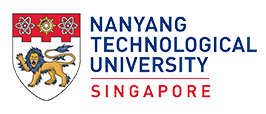Graduate Studies Blog
NANYANG EXECUTIVE MBA
THE FUTURE OF TECH IN ASIA
Technological advancements have dramatically altered how people live and work in Asia Pacific, giving rise to new opportunities. We hear from Lars Droste, an alumnus of the Nanyang Executive MBA programme at NTU Singapore. After growing his career in Germany and the United Arab Emirates, Lars is now based out of Singapore as Google’s Head of Partnerships, APAC and Japan.
The region has a significant need for highly-creative leaders with unique global perspectives, explains Lars. With their knowledge of differing cultural foundations, these individuals can unlock hidden potential and leverage technology to achieve innovative outcomes.
There has been a remarkable shift in the way organisations are led to create new tech-based innovations. In a tumultuous region with unique economic, social, and political challenges, managers play a pivotal role in improving the success of their organisations.
The era of digital and its enormous promise
As competition rises domestically and internationally, companies are under enormous pressure to operate more efficiently. The arrival of technologies like artificial intelligence and large-scale data analysis is key to this shift. With the advent of the cloud, for example, companies can consolidate legacy systems and processes, saving time and money and becoming far more agile in the process.
Beyond enabling business and process efficiency, technology also provides opportunities for disadvantaged communities in the region’s developing countries. Lars highlights the example of microfinance companies, which have combined edge infrastructure, artificial intelligence, and cloud technology into a solution that empowers local farmers to afford seeds or crops.
The changing nature of leadership
As technology brings more people together, the nature of leadership will need to evolve. “In the past, leadership was about making decisions and keeping everyone in line,” remarks Lars. “That has changed to a much more collaborative model, where the leader’s role is to facilitate conversations within the team.” In a 2021 Workplace Learning Trends Report conducted by Udemy for Business, top skills in demand in Singapore include storytelling, design thinking, and listening skills.
A large part of Lars’ day-to-day now involves getting together with his team to assess how local trends and culture affect their clients. He says that cultural intelligence and empathy have become critical skills for every team member. Simply speaking the same language is not enough; knowledge of different cultural backgrounds and differences is necessary to avoid misunderstandings.
Continuing education provides valuable fresh perspectives
Recent events have thoroughly tested the region’s resilience, but it has also presented an opportunity for local leaders to refresh and add to their portfolio of skills. Many, including Lars, used their extra time to pursue an additional degree. Lars applied for and completed Nanyang Technological University’s Executive MBA (EMBA) programme during the pandemic.
Regardless of how they choose to top up their skills, leaders looking to facilitate collaborative work across borders and language barriers need to sharpen their cultural intelligence, awareness of geographic trends, and communication styles. “Many technological projects fail because of a lack of this knowledge,” Lars explains. As executives focus on making decisions quickly and flexibly, they’ll also need to address their personal biases and shortcomings.
An ingrained knowledge of decision-making frameworks is also valuable. Design thinking, for example, is growing in popularity because it serves as a typical “language” that unites teams, industries, and backgrounds.
Despite this more significant emphasis on soft skills, there is one caveat. Technology such as blockchain, artificial intelligence, and cloud infrastructure are getting increasingly more complicated. Therefore, Lars shares that there will always be a need for talent with deep technical knowledge.
Coming together to shape the future of Asia
“The future of tech is especially bright in Southeast Asia,” says Lars. Google’s partners and clients in APAC are already using the cloud to power artificial intelligence, micro-sensors, and machine learning to improve millions of people’s living and working conditions.
Asia is a diverse region; every project and country is different. For the right individuals, this is an exciting challenge. With the right blend of tech-savviness and cultural dexterity, leaders can help their companies leap past lengthy trial-and-error stages and push the boundaries of what technology can do. The region is transforming before our eyes: it is time for leaders to evolve in tandem.


